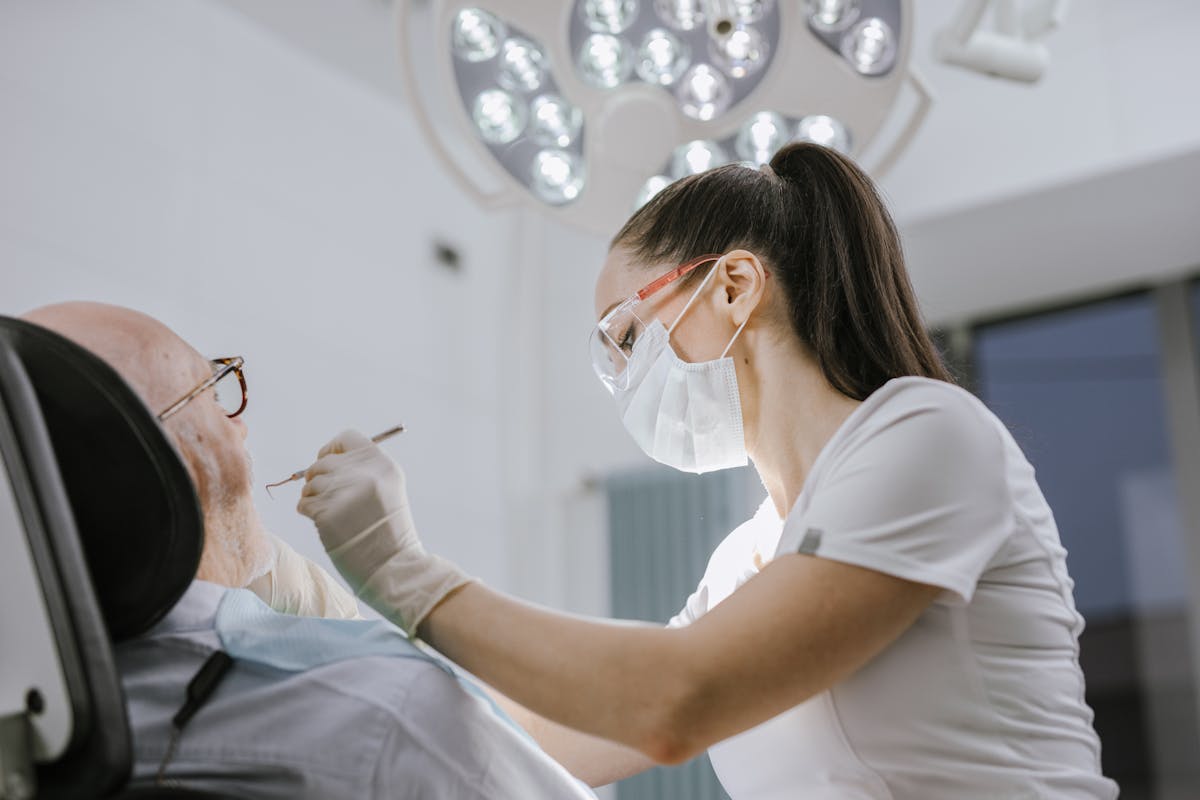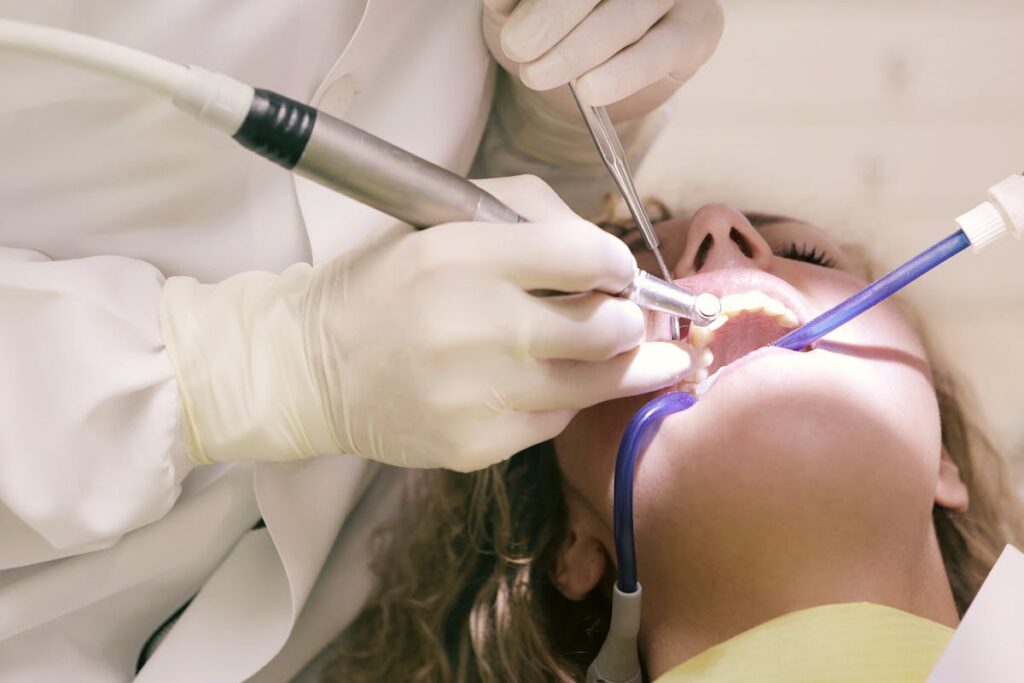Restorative dentistry in Chicago plays an essential role in combating tooth decay and damage by employing advanced techniques and materials. From dental crowns to bridges, these treatments restore both function and aesthetics, addressing the detrimental effects of decay. With innovations in restorative materials and technology, dentists can achieve natural-looking results. Yet, the significance of personalized treatment plans and patient education in preventing further decay remains a compelling aspect worth exploring further.
Understanding Tooth Decay and Its Impact
Tooth decay, a prevalent oral health issue, is primarily caused by the demineralization of tooth enamel due to acids produced by bacterial plaque. This process greatly impacts the tooth structure, beginning with the outer enamel and potentially advancing to the deeper layers, including dentin and even the pulp. As the decay progression continues unchecked, it compromises the integrity of the tooth, leading to cavities and, eventually, total structural failure. The initial stages may present as minor enamel lesions, but without intervention, the decay can rapidly penetrate deeper. Understanding the intricacies of tooth structure, including enamel, dentin, and pulp, is vital in identifying how decay progression affects overall oral health. Effective prevention and timely intervention are essential to mitigate the adverse effects of tooth decay.
The Role of Restorative Dentistry
Restorative dentistry plays a critical role in repairing and maintaining the function and aesthetics of teeth affected by decay and other structural damages. This field utilizes a variety of restorative techniques to address issues stemming from cavities, fractures, and wear. By employing methods such as crowns, bridges, and inlays, dental professionals restore tooth integrity and function, preventing further deterioration. Precision in these procedures guarantees ideal outcomes and patient satisfaction.
Moreover, patient education is a cornerstone of restorative dentistry, empowering individuals with the knowledge to maintain oral health post-treatment. Dentists provide guidance on oral hygiene practices and preventive measures tailored to individual needs, reducing the recurrence of dental issues. This educational approach fosters long-term dental health, minimizing the necessity for future interventions.
Advanced Techniques in Dental Fillings
In recent years, the field of dentistry has witnessed considerable advancements in dental fillings, enhancing both the functionality and aesthetics of restorations. Cutting-edge filling materials such as composite resins and glass ionomer cements are now favored for their ability to closely mimic the natural appearance of teeth, considerably improving dental aesthetics. These materials bond effectively to tooth structures, offering increased durability and strength. Additionally, innovations in adhesive technology have further improved the performance of these fillings, ensuring long-lasting results. Advanced techniques like digital imaging and laser treatments aid in the precise placement of fillings, reducing the risk of further decay and damage. As a result, these technologies contribute to the overall health and restorative success of dental treatments in Chicago.
The Importance of Dental Crowns and Bridges
Dental crowns offer significant benefits, including restoring function and aesthetics to damaged teeth by providing a protective outer layer. Dental bridges efficiently address gaps caused by missing teeth, promoting proper alignment and preventing adjacent teeth from shifting. These restorative solutions are known for their longevity, often lasting many years with proper care, thereby providing a durable investment in oral health.
Benefits of Dental Crowns
Dental crowns serve as a crucial component in restorative dentistry by providing structural reinforcement and aesthetic improvement to compromised teeth. These restorations are meticulously designed to encase the visible portion of a tooth, thereby enhancing its durability and appearance. Crown materials such as porcelain, ceramic, and metal alloys offer a range of options tailored to individual needs. Porcelain and ceramic crowns are favored for their superior aesthetic considerations, closely mimicking natural tooth color and translucency. Metal crowns, although less visually appealing, provide exceptional strength and longevity, making them suitable for posterior teeth. The selection of crown materials is informed by functional demands and patient preferences, ensuring an ideal balance between durability and aesthetics in restorative dental care.
Dental Bridges for Gaps
While dental crowns are invaluable for individual tooth restoration, addressing larger gaps in the dental arch requires a different approach. Dental bridges serve this purpose effectively by spanning the space left by missing teeth. There are several dental bridge types, including traditional bridges, cantilever bridges, and Maryland bonded bridges. Each type involves anchoring artificial teeth to adjacent natural teeth or implants, ensuring efficient gap closure. Traditional bridges are most common, relying on crowns on adjacent teeth for support. Cantilever bridges, used when only one adjacent tooth is available, offer alternative solutions. Maryland bridges utilize a metal or porcelain framework bonded to existing teeth. These structures not only restore aesthetics and function but also prevent surrounding teeth from shifting, maintaining overall dental health.
Longevity of Restorative Solutions
The longevity of restorative dental solutions, such as crowns and bridges, is a critical factor in ensuring sustained oral health and functionality. These solutions are engineered to provide durable protection and structural support to compromised teeth. Dental crowns, typically composed of porcelain, metal, or ceramic, demonstrate a restorative lifespan of 10 to 15 years, contingent upon material quality and adherence to maintenance requirements. Similarly, bridges, which replace missing teeth by anchoring to adjacent teeth, have a comparable lifespan. Regular dental check-ups, proper oral hygiene practices, and avoiding excessive force on these restorations enhance their durability. Addressing wear or damage promptly is essential for extending the effective lifespan of crowns and bridges, thereby maintaining their integral role in restorative dentistry.
Dental Implants: A Permanent Solution
As a transformative advancement in restorative dentistry, dental implants offer a permanent solution for individuals seeking to replace missing teeth. Dental implants consist of a titanium post surgically inserted into the jawbone, serving as an artificial root for a crown. There are various implant types, including endosteal and subperiosteal, each suited to different anatomical and clinical circumstances. The selection of the appropriate implant type is vital for successful osseointegration and long-term durability.
The recovery process following implant placement is essential for ideal outcomes. Typically, it involves several months of healing, allowing the bone to integrate with the implant. Patients must adhere to post-operative care instructions to minimize complications and guarantee the success of the implant. Overall, dental implants provide a robust, lasting solution for tooth replacement needs.

Innovations in Restorative Materials
Recent advancements in restorative dentistry materials have markedly enhanced treatment outcomes in Chicago. Innovations in dental composites now offer superior strength and aesthetics, while biocompatible ceramics have improved patient safety and long-term success. These developments are pivotal for both practitioners and patients, enabling more durable and natural-looking restorations.
Advanced Dental Composite Options
With the continuous evolution of dental technology, advanced dental composite options are transforming restorative dentistry, offering enhanced durability and aesthetic outcomes. These composite materials, typically composed of a resin matrix and filler particles, are engineered for superior performance in aesthetic restoration procedures. They provide a balance of strength and natural appearance, making them ideal for anterior and posterior teeth restorations. Recent innovations focus on improving wear resistance, color stability, and polishability, addressing previous limitations in longevity and aesthetic fidelity. Additionally, advancements in nanotechnology have led to the development of nanocomposites, which exhibit enhanced mechanical properties and better handling characteristics. These materials are pivotal in creating restorations that mimic natural dentition, ultimately improving patient satisfaction and clinical success rates in restorative dentistry.
Biocompatible Ceramics Advancements
Building upon the advancements in dental composites, biocompatible ceramics have emerged as a significant innovation in restorative materials. These ceramics, renowned for their compatibility with biological tissues, offer a promising alternative to traditional materials. Their structural integrity and aesthetic similarity to natural teeth make them ideal for dental restorations. Ceramic innovations have focused on enhancing the mechanical properties, such as fracture toughness and wear resistance, ensuring a longer lifespan of restorative work. Additionally, these biocompatible materials minimize adverse reactions and promote effective integration with the natural tooth structure. In Chicago, dental practitioners are increasingly adopting these advancements to address tooth decay and damage, providing patients with durable and aesthetically pleasing restorations. This shift towards ceramics reflects a broader trend in modern dentistry, emphasizing quality and patient safety.
The Role of Technology in Diagnosis and Treatment
As advancements in dental technology continue to evolve, their integration into restorative dentistry in Chicago has greatly enhanced both diagnostic and treatment capabilities. Digital imaging plays a pivotal role, allowing for precise visualization of tooth structures, facilitating accurate diagnosis, and enabling detailed treatment planning. This technology provides high-resolution images that help dental professionals identify areas of decay and structural damage with exceptional clarity. Additionally, computer-aided design and manufacturing (CAD/CAM) systems streamline the production of dental restorations, enhancing accuracy and efficiency. Advanced software enables practitioners to create virtual models of dental restorations, ensuring ideal fit and function. These technological innovations contribute to improved patient outcomes, reducing the risk of complications and ensuring long-term success of restorative procedures.
Personalized Treatment Plans for Optimal Results
Personalization is at the forefront of modern restorative dentistry, guaranteeing treatment plans are tailored to the unique needs of each patient. Customized care involves conducting thorough individual assessments to determine the most effective interventions for tooth decay and damage. Dentists utilize a extensive approach, evaluating factors such as dental history, current oral health status, and specific patient goals. This process guarantees that each treatment plan is not only effective but also aligned with the patient’s overall health profile. By integrating advanced diagnostic tools and techniques, practitioners can enhance the precision of these assessments. The result is a highly individualized treatment strategy that optimizes restorative outcomes, minimizing the risk of complications and maximizing the longevity and function of dental restorations.
The Psychological Benefits of Restorative Dentistry
While the primary focus of restorative dentistry is the rehabilitation of dental function and aesthetics, its psychological benefits are equally significant. Restorative procedures contribute substantially to a patient’s emotional well-being by alleviating anxiety associated with dental imperfections. The enhancement of physical appearance through improved dental structure often results in a confidence boost, enabling individuals to engage more freely in social interactions. This newfound confidence is not merely superficial; it can influence personal and professional relationships positively. Restorative dentistry can mitigate self-consciousness related to damaged or decayed teeth, leading to a more positive self-image. Additionally, the long-term stress reduction associated with alleviated dental concerns promotes overall emotional balance. Consequently, restorative dentistry in Chicago extends beyond physical health, impacting psychological resilience and social functioning.
Frequently Asked Questions
How Does Restorative Dentistry Affect Overall Oral Hygiene Practices?
Restorative dentistry improves oral hygiene by repairing damaged teeth, facilitating effective cleaning. It emphasizes preventive measures, encouraging regular check-ups and maintenance, which reduce the risk of further decay and promote a thorough approach to oral health management.
Are There Any Dietary Restrictions After Restorative Dental Procedures?
After restorative dental procedures, patients often receive dietary guidelines emphasizing soft, non-abrasive recovery foods. These guidelines aim to protect dental work, minimize discomfort, and promote healing by avoiding hard, sticky, or hot foods that could cause complications.
What Are the Typical Costs Associated With Restorative Dental Treatments in Chicago?
The typical costs associated with restorative dental treatments in Chicago vary widely. Cost variations depend on the specific procedure, materials used, and practitioner experience. Treatment comparisons reveal significant price differences between basic fillings, crowns, and advanced procedures like implants.
How Does Dental Insurance Typically Cover Restorative Procedures?
Dental insurance coverage for restorative procedures in Chicago often includes coverage limits and policy specifics. Coverage limits dictate reimbursement amounts, while policy specifics determine eligible treatments, waiting periods, and patient co-payments, varying greatly across insurance providers.
What Are the Potential Risks or Complications of Restorative Dentistry?
Potential risks in restorative dentistry include sensitivity issues, procedure failures, infections, and allergic reactions. Sensitivity may arise from exposed dentin, while procedure failures may result from improper technique or material failure, necessitating further corrective treatments.
